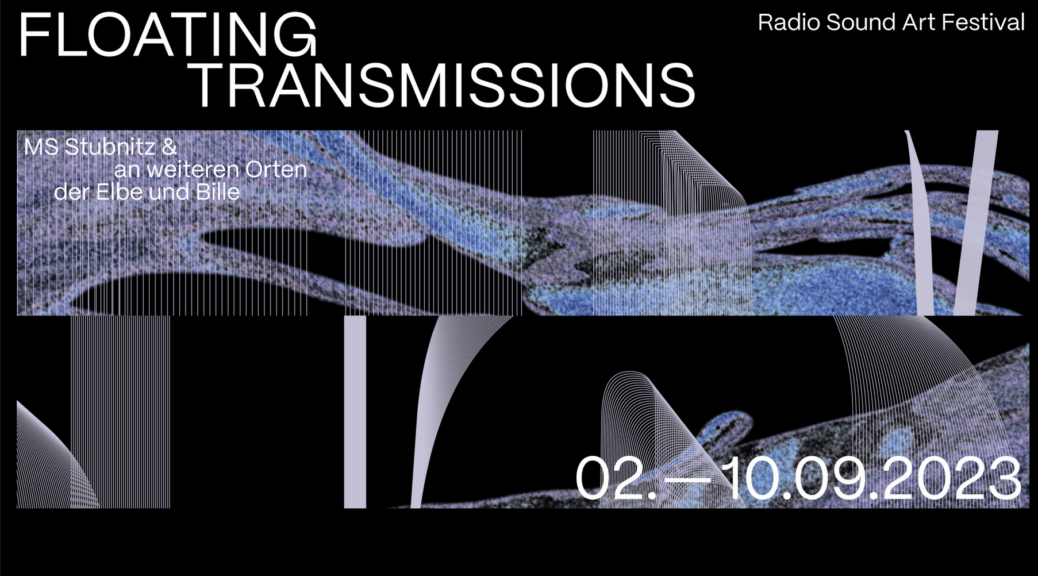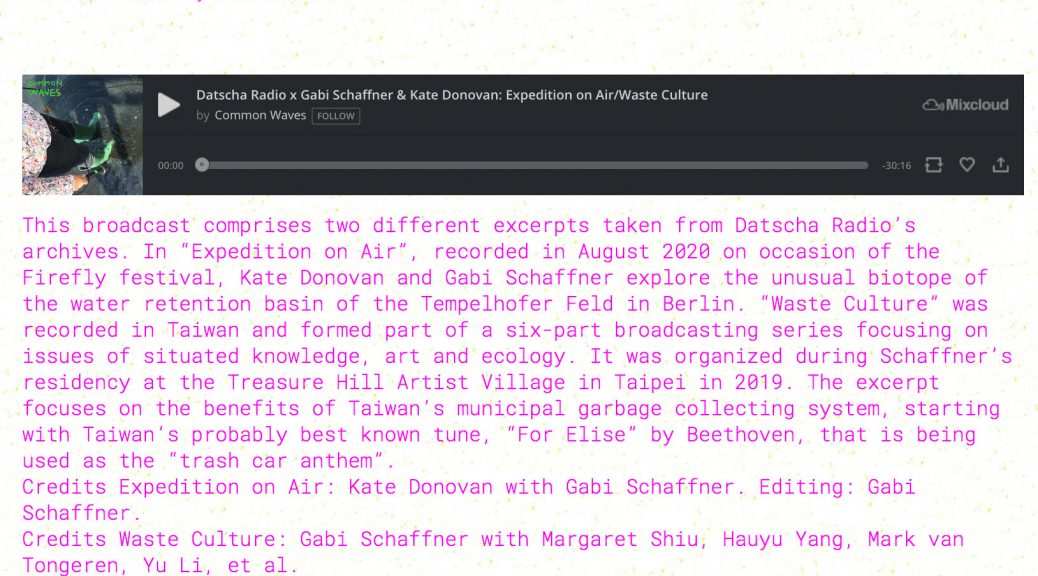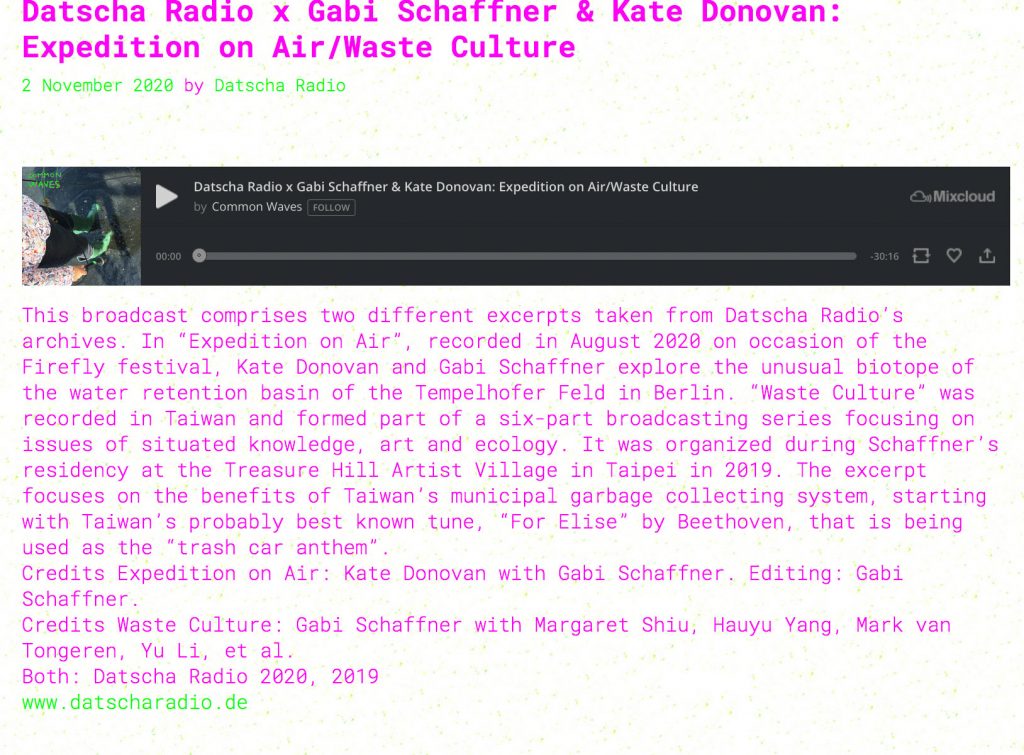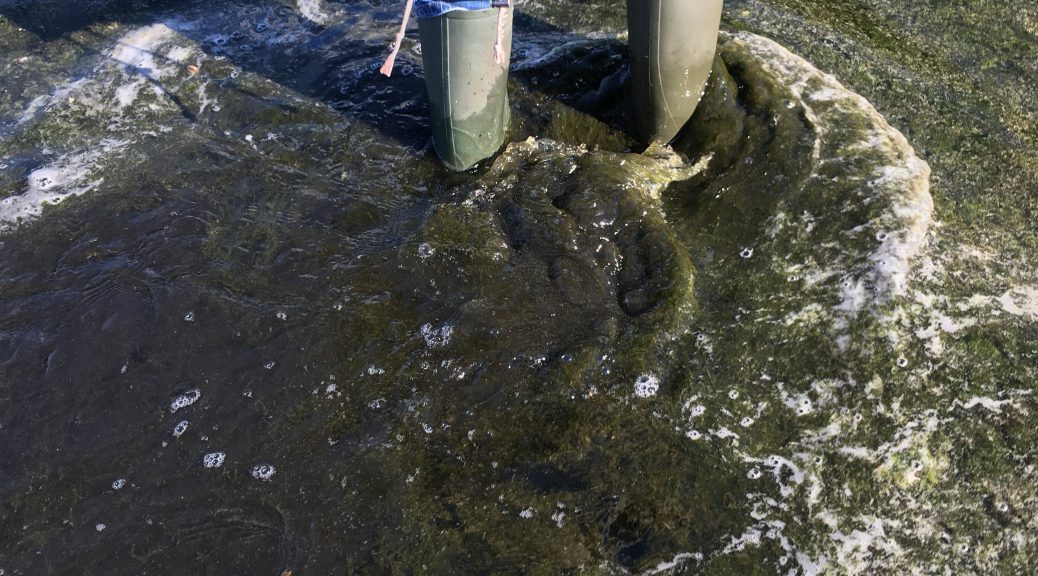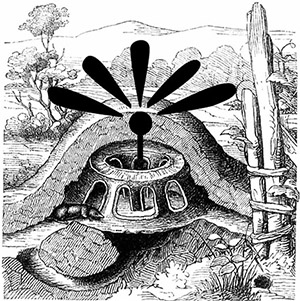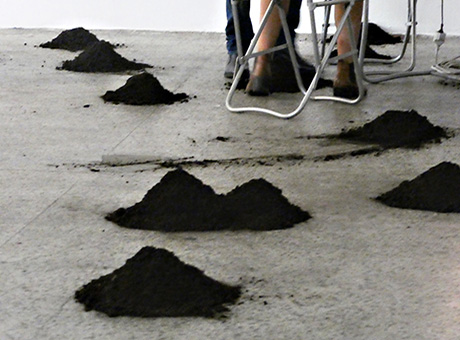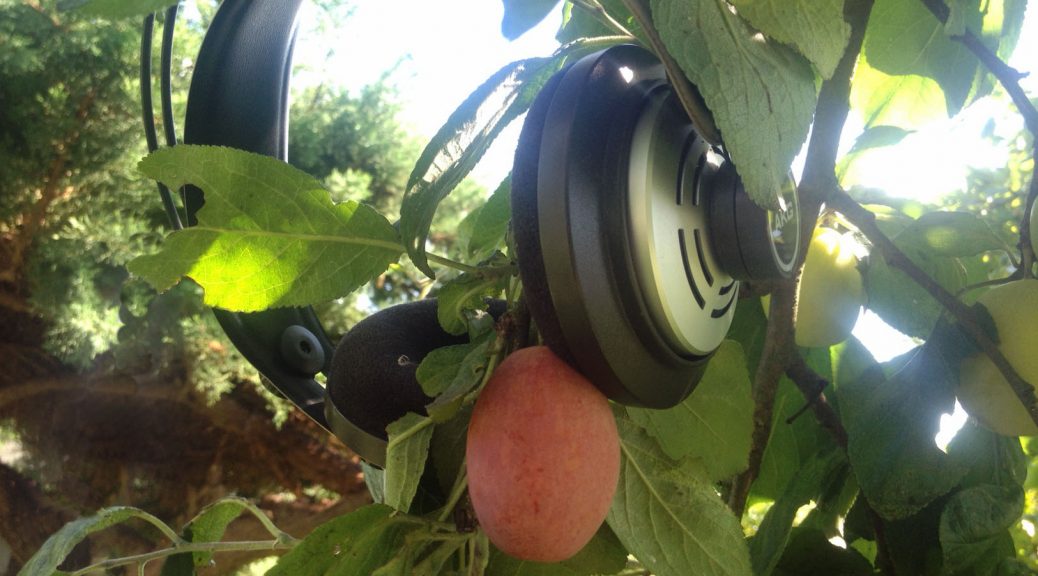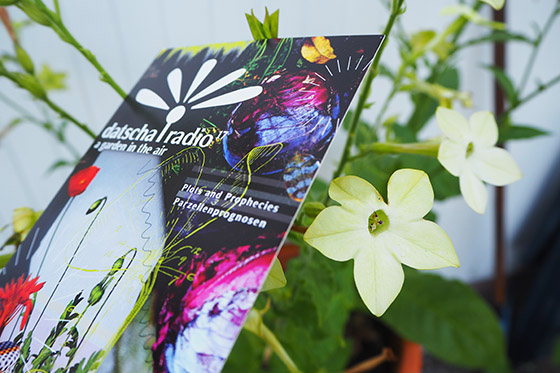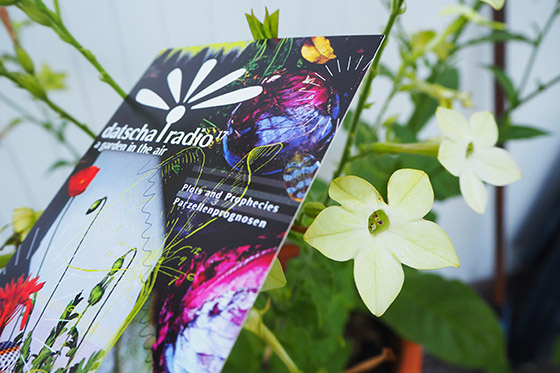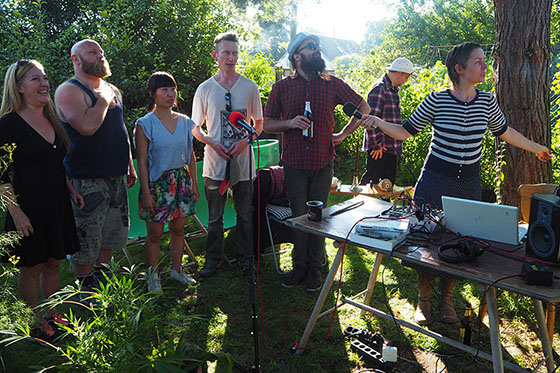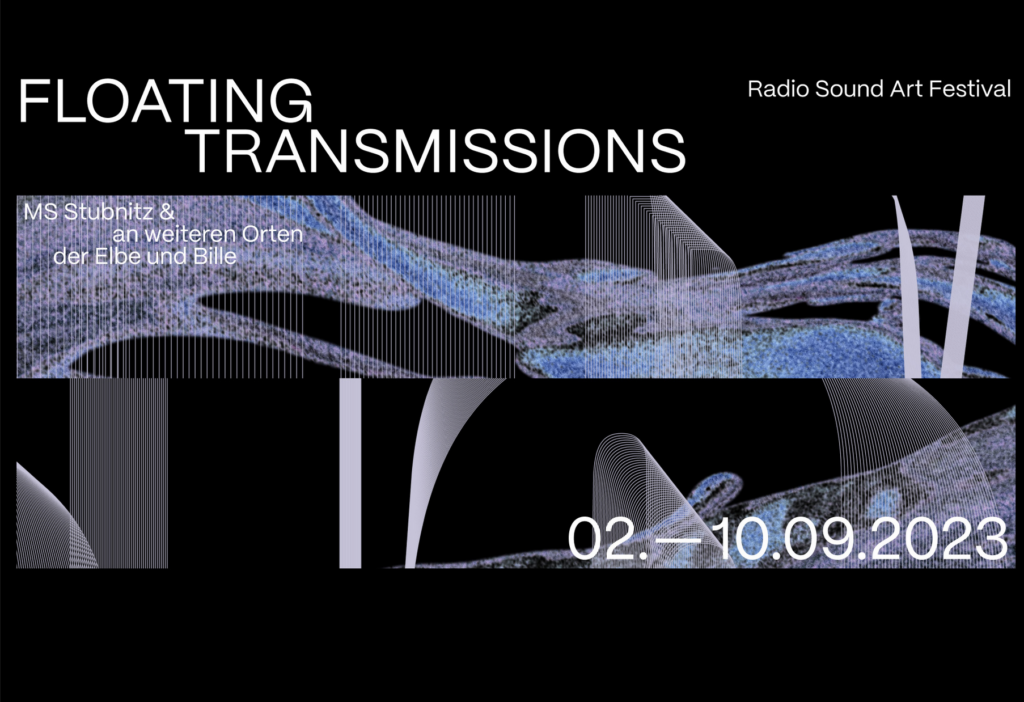
“R for Radio” and “Schweben” were both created for and exhibited at the Floating Transmissions festival in Hamburg.
R for Radio. Lower deck, MS Stubnitz
19:20 min. Narrow-cast installation for transmitter and pocket radios. 88,4 MHz. FM
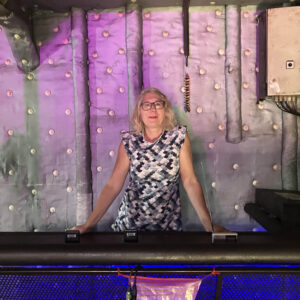
R as in radiation, rocks, reminiscence, rockets
A as in Argonauts, ass, audio
D as in darling, dot, dispersal
I as in island, idol, India
O as in „oh, it’s you again!“, ocean, oblivion
R for radio
Full of electric ghosts and recordings of the waters huddling close to the body of the Stubnitz at her berth, R for Radio takes the listeners on a journey into a lo-fi acoustic maze.
Angels meet devils, and float together with dispersed shortwaves from different countries, with horror movie sounds and traffic songs, phonophernalia, and a woman reading some of the best ‘liked’ from Virginia Woolfe’s The Waves.
Credits
Bonnie song (Trad.): Sanne Drouhin-Kok, Readings from “The Waves” by Virginia Woolfe: Kate Donovan. Devil Story: Michael Fisher, Hobart, Tasmania. Beat: Ghostly Beat by Apple. Shortwave radio recorded in Hualien (with unknown song by unknown interpret), Taiwan; Bogong Village (“I only have eyes for you”, Harry Warren – unknown interpret), Australia. Other field recordings, sampling, micro compositions: Gabi Schaffner
Schweben. Baakenhafen
15:42 min. Geofenced audio. Listen via echoes.xyz
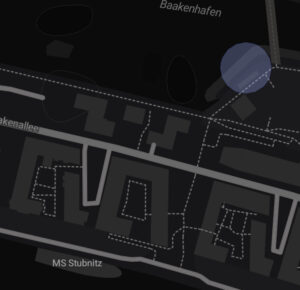
‘Schweben’ is an invitation to immerse yourself in a series of short narratives about out-of-body musings.
Schweben can be listened to only at Baakenhafen, which is a meeting point and chill place maybe 50 meters distant from the berth of the Stubnitz. The piece takes the “float” (=schweben) in the title of the exhibition literally. Guests, passerbys and members of the Stubnitz staff were asked about their experiences in floating or hovering in the air… Other bodies of water and air whirl alongside, from vitamin tablets to ship ventilators.
The piano belongs to the Stubnitz, and is played in an improvisation by the crew’s cook, Ronan.
Credits
Stimmen/Voices: Claudia, HW, Karim, Jann, L., Mathias, Tina
Piano: Ronan.
Fieldrecordings: Gabi Schaffner. Other: „Ein Zimmer voller Sterne“, Schaffner, 2020.
Samples Freesound.org: 39900__aesqe__sea_water_churning; 267137__claudius__bubbles, 103104__jovica__layers-018-alchemic-hunting-125; 133863__vhlam__ext-red-sea; 433811__archos__vitamin-tablet.
THANK YOU, STUBNITZ!
For infomation about the festival, please go to https://www.instagram.com/floatingtransmissions/
Anfang September verwandelt sich die MS Stubnitz in eine schwimmende Radiostation. In experimentellen künstlerischen Formaten wird der «Fluss-Raum» über UKW und weitere Protokolle übertragen. Die teilnehmenden Künstler*innen, wie Sophie Allerding, Jack Bardwell, Benjamin van Bebber, Ludwig Berger, Kathrin Dröppelmann, Antje Feger, Ulf Freyhoff, Leo Hofmann, Hye-Eun Kim, Tilo Kremer, Niko de Paula Lefort, Felicity Mangan, Felix Raeithel, Gabi Schaffner, Paula Schopf, Benjamin Stumpf, Dong Zhou uvm. stellen ihre Arbeiten vor. Es entsteht ein Live-Radio-Programm, das aus künstlerischen Beiträgen – von multimedialen Klangskulpturen bis immersiven Performances an Elbe und Bille mit städteübergreifender Übertragung besteht. Neben Klanginstallationen, die sich auf vielfältige Weise mit den Soundscapes der Stadt auseinandersetzen, soll es außerdem Workshops und partizipative Projekte geben, die sich prozesshaft entwickeln.
FLOATING TRANSMISSIONS zeigt ästhetische Zugänge als «schwimmende Radiostation», um in immersiven Settings sinnliche Erfahrungen mit auditiven Medien zu ermöglichen. Das Programm, das temporär auf schwimmenden Expeditionen über Elbe und Bille treibt, wird ergänzt durch Konzertabende und kuratierte Sound-Listening-Sessions von Hamburger DJs und Labels. Die Formate werden über das Freie Sender Kombinat FSK, HALLO: Radio und TIDE.radio sowie Freie Radios in Deutschland u.a. übertragen.
